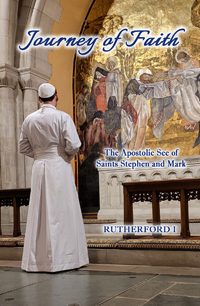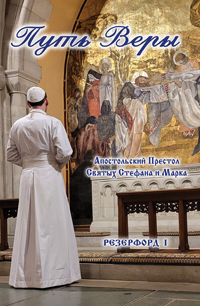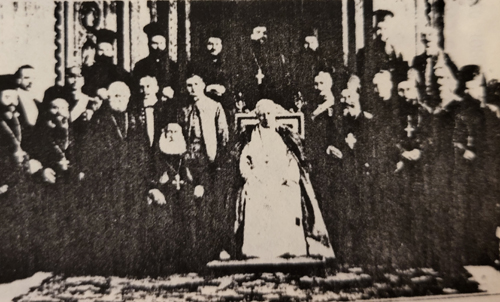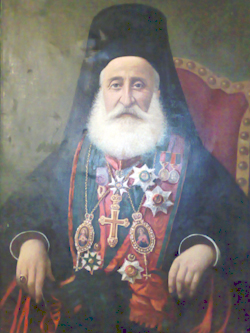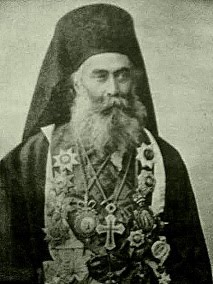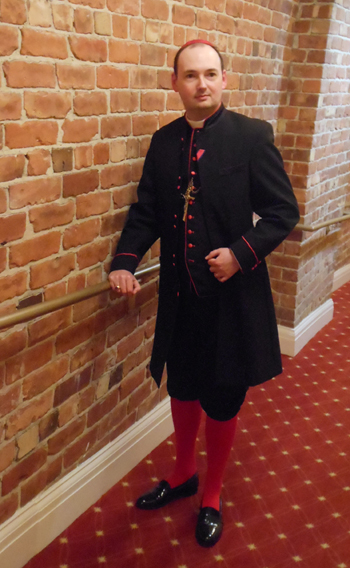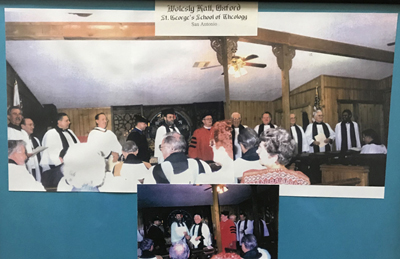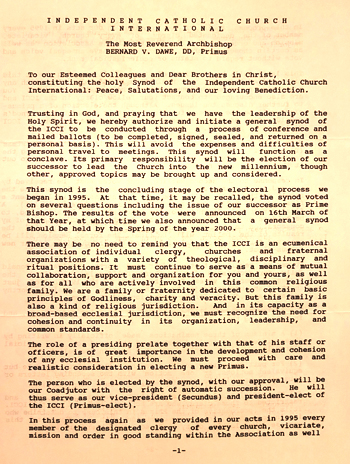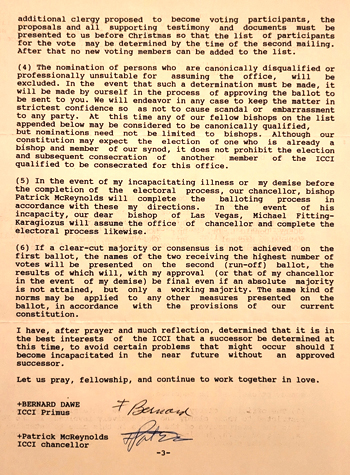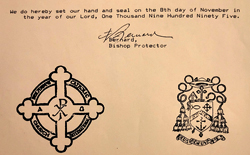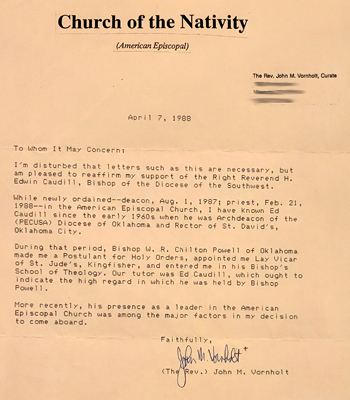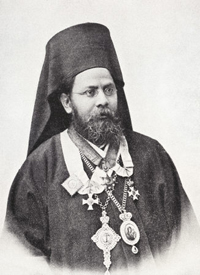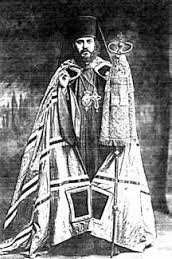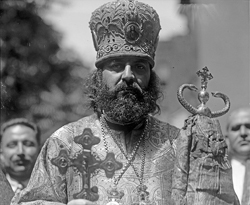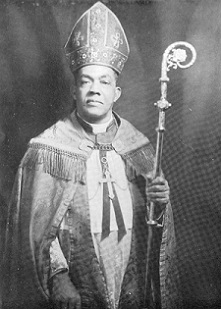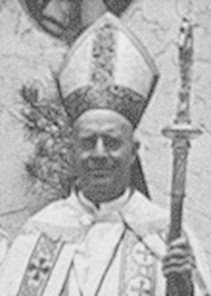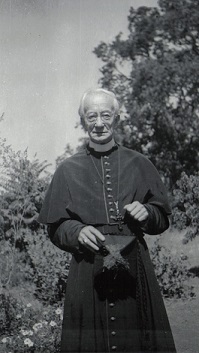|
THE LEGACY OF THE Part of the
Heritage of the United Roman-Ruthenian Church
WHO
ARE THE PEOPLE OF THE Read more about our vision, mission, and core values by following this link.
Among the most important historical elements that the Diocese of Rome-Ruthenia (United Roman-Ruthenian Church) succeeds is the Independent Catholic Church International. That Patriarchal and Apostolic See was formed in 1981 as the unification of various Old Catholic and traditional Anglican churches and also brought them together with significant Apostolic lineage of and affiliation with the Eastern Rite Christian Churches. It was led first by H.E. Most Rev. Peter Wayne Goodrich as Primate. Then H.E. Most Rev. Robert Vincent Bernard Dawe, previously the church's international legate, became Primate in 1983. Several churches around the world today are in the Apostolic Succession via the Independent Catholic Church International.
Among those Apostolic descendants is the Diocese and Catholicate of Rome-Ruthenia, the senior jurisdiction of the United Roman-Ruthenian Church. It realises the dream of unified western-eastern Christianity envisioned by Archbishop Dawe and other predecessors and maintains its own distinct liturgy built upon the 1600-year-old Liturgy of St. John Chrysostom with elements of the Roman Tridentine Rite. In addition, the Catholicate maintains several important documents and records of the late Archbishop Dawe in its Pontifical Apostolic Library.
Additionally, even though it is not formally a member of other ecclesial bodies, the Catholicate and entire United Roman-Ruthenian Church has historical communion and shared heritage with the Anglican Communion and the Philippine Independent Church (also known as the Philippine Independent Catholic Church) via the historic First Chair of the United Roman-Ruthenian Church, as Bishop of the Southwest, located at St. Chad's Cathedral. Both are in turn in communion with the Old Catholic See of Utrecht. See this archived page from the original Archdiocese of the Southwest website in 2008. See also these archival transcripts of the Diocese of the Southwest newsletter in 2002. Saint Edwin Caudill (His Grace Howard Edwin Caudill) was consecrated by Macario V. Ga, Supreme Pontiff (Bishop) of the Philippine Independent Church, and Bishops Frank Benning and John Hamers. 21 October 1993, Holy Cross Polish National Catholic Church, Brooklyn, New York. The Diocese of the Southwest was for a time part of a communion known as The Anglican Church, Inc. It had previously been part of the Anglican Catholic Church, and its first bishop was the Rt. Rev. Robert Harvey. Bishop Caudill was consecrated as the Coadjutor for the diocese in 1983 and then became the Bishop Ordinary upon Bishop Harvey's resignation in 1984. In 1983, the Anglican Church, Inc. entered into a communion with the American Episcopal Church (distinct from the Protestant Episcopal Church of the United States), which provied two co-consecrators for Bishop Caudill. The American Episcopal Church had also entered into a communion agreement with the with the Diocese of Amritsar, of the former Church of India, Pakistan, Burma and Ceylon, the automous province of the Anglican Church of England in India. At the time, the joint leadership of the Anglican Church, Inc. and the American Episcopal Church included the following Bishops: Anthony F.M. Clavier, Primate, John M. Hamers, H. Edwin Caudill, Frank H. Benning, Walter H. Grundorf, G. Raymond Hanlan, and Robert C. Harvey. There were approximately 74 parishes and around 5000 members.
In the Southwest Diocese, Saint Edwin was succeeded by Bishop Wayne Ellis (see newsletter transcripts) The remnants of Saint Edwin's See, the Diocese of the Southwest, after suffering a schism, became part of the Apostolic Communion of Anglican Churches in 2008. This included the Very Rev. Dean John Mark Vornholt, who returned in 2009, recognizing it as the authentic continuation of the Diocese of the Southwest in which he had previously served under Bishop Caudill. The new Bishop of the Southwest was the Vicar-General of the Apostolic Communion of Anglican Churches. He was subsequently succeeded by His Apostolic Highness Prince-Bishop Radislav (Rutherford) I, Roman-Ruthenian Pope (then Archbishop Johnson), at which point it became a Metropolitan See. Thereafter its territorial boundaries changed, and it was known as the Patriarchal See of St. Stephen and Coadjutorship of Rome. See more about the Cathedral of St. Chad, Historic First Chair of the Holy Apostolic See.
The following is one of several pastoral letters contributed by Dean Vornholt while serving as Dean to the Metropolitan of the Southwest (then-Archbishop Johnson). These letters were published under the title of "Papa Doc's Ponderings." (One of the Dean's former parishioners called him "Papa John," and when he earned a doctorate, he began calling him "Papa Doc.") The letters had a certain colloquial style that nevertheless was filled with meaning. Papa Doc's
Ponderings
CLERICAL CHOLER The
world will little note nor long remember, but Sunday morning only one
of two retired priests attending nondenominational First Evangelical
Church in Memphis wore clericals. Fr. Robertson Eppes, a longtime
friend and former rector of All Saints, Memphis, did. I didn’t as I
occupied a pew next to my wife, kids and grandkids (my son-in-law, in
fact, is an elder and my daughter leads a Bible study)
First Evan has long welcomed me. I officiated at my daughter’s marriage there, using the 1928 BCP. A former pastor, Ronnie Stevens, used to joke that seeing Rob+ and I in the congregation was good advertising. His successor, Howard Clark, allowed Anglican Common Cause to use the fellowship hall for a regional assembly. So my rationale in wearing civvies had nothing to do with First Evan but a lot to do with what’s been happening in The Episcopal Church (formerly known as PECUSA) and in the Diocese of West Tennessee in particular. Prior to ordination I had a long and honorable history in the Diocese of Tennessee and its successor, having served at St. Andrew’s, Harriman, as senior warden, lay reader and delegate to convention; St. Michael’s, Knoxville, during a year of graduate school at UTK; Christ Church, Chattanooga, during a year as visiting professor at UTC (a much more conservative +Don Johnson was then rector); and, eventually, Good Shepherd, Memphis, as vestryman and convention delegate. Looking back, I see a common thread—these were all either Anglo-Catholic or Prayer Book Catholic parishes largely isolated from PECUSA’s creeping national liberalism. Bishops tended to leave them alone.... Then in 1987, through a chance (miraculous?) reconnection with +Ed Caudill, under whom I read for Holy Orders more than 20 years earlier in the Diocese of Oklahoma, I completed the canonical exams and was ordained deacon and priest in the Anglican Diocese of the Southwest, a Continuing Church body in which he had been made Bishop Ordinary following his consecration in the undisputed Chambers/ Denver succession. Yesterday I decided I didn’t want to answer any more questions from First Evan’ers who identified me with the Diocese of West Tennessee and its policies/polity. It seemed too much like guilt by association.... So I wore civvies there for the first time in more than 20 years, and will continue to do so. Strangely I’m reminded about somewhat similar confusion a half-century when my late mother mentioned, “I see where some offshoot of your church is talking about merging with mine” (she was then a United Methodist and growing up and serving as a pastor’s wife in the old Evangelical & Reformed Church). I had a hard time explaining to her that St. Matthew’s, Bloomington, IL, was in fact a parish of the Protestant Episcopal Church. “Ach, no,” she said, referring to the smells and bells, confessional booth and other appurtenances common in the Biretta Belt of the upper Midwest, in which Nashotah House was referred to as “The One True Seminary of the Church” (all one word). So there you have it, for what it’s worth! “Hier stehe ich, ich kann nicht anders “ as Luther said—“Here I stand, I can do no other.” 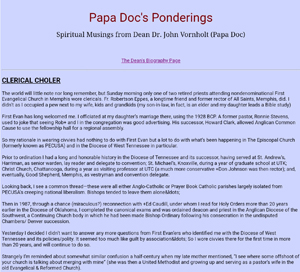 Part of the page for Papa Doc's Pondering on the original website of the Metropolitan Archdiocese of the Southwest. Upon the death of Dean Vornholt in 2010, Pope Radislav I (then-Archbishop Johnson) gave the following statement: Memorial
Letter from the Metropolitan
Dear
Brethren, Requiescat
in Pace,
+Rutherford Johnson Archbishop and Metropolitan of the Southwest The Stephenian Archives (the archives of the Apostolic See of the United Roman-Ruthenian Church) and the Pontifical Apostolic Library maintain extensive records pertaining to the history of the former Anglican Diocese of the Southwest, the Philippine Independent Catholic Church, and the Independent Catholic Church International and their relationship to the modern United Roman-Ruthenian Church. Just a few of those documents, excerpts, and fragments are provided by the Pontifical Apostolic Library below in the interest of preservation of history and the legacy of the United Roman-Ruthenian Church. See also the Newsletter Archive See also the Pastoral Excerpts from the former Diocese of the Southwest.
The Old Roman Catholic Apostolic heritage of the Catholicate also historically enjoyed an intercommunion with the ancient Orthodox Patriarchal Sees of Antioch and Alexandria, the first See of the Apostle Peter and the second See of the Apostle Mark respectively. These agreements were achieved by Archbishop Arnold Harris Mathew. The intercommunion with Antioch was signed on 5 August 1911, and the intercommunion with Alexandria was signed the following year.
The following is the text of a letter to Archbishop Mathew on behalf of the Greek Orthodox Patriarch of Antioch, Gregory IV: Monseigneur,
Colleague and brother in Jesus Christ, with open arms in the love of the Savior, I receive you among us, and I accept your oath of fidelity to His Beatitude the Orthodox Patriarch and his Holy Synod of Antioch, since those who hold our Faith and wish to be united with us have never been prevented from joining us. Praying God to bless you, and not only you but all those who come to us with you, we bless you in the name of His Beatitude the Patriarch and of the Holy Synod of Antioch. Your Colleague and Brother in Jesus Christ, GERASSIMOS MESSARRA, Prince Archbishop and Metropolitan, Orthodox Church of Beirut 5th Aug. 1911 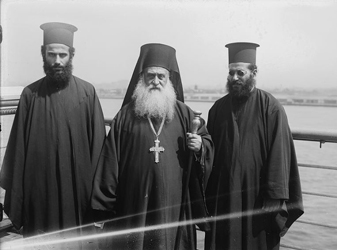 L-R: Archdeacon Anthony Baehir, Metropolitan Gerassimos Messarra, and Archimandrite V. Abouasly  Patriarch Gregory IV of Antioch These agreements in practical terms have lapsed, but they have never been rescinded. They remain an important and valued part of the heritage of the entire United Roman-Ruthenian Church. Combined with other historic agreements, they solidify the historic and current canonical status of the United Roman-Ruthenian Church. The Church's Orthodox heritage also includes the American Orthodox Catholic Church (via Prince-Abbots Emond I and Edmond II of San Luigi), the Catholicate of the West (via Mar Georgius I), and the African Orthodox Church (via Alexander I). The United Roman-Ruthenian Church's Russian Orthodox succession also comes from Abdullah Aftimios Ofiesh, consecrated in the Russian Orthodox Church. He was founder of the American Orthodox Catholic Church. Born in Lebanon, he was commissioned to found an English-speaking jurisdiction of the Russian Orthodox Church in the United States. He married, with the intent to abolish the requirement of a celibate episcopacy.
See also the Yugoslavian legacy of the Church. REFERENCES AND FURTHER READING Apostolic and Temporal
Succession of Radislav I. Pontifical Georgian Press.
2024. |
|
|
|

